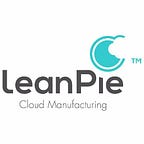Why Marketing Procurement should focus on removing waste
The number one priority for Marketing Procurement is to reduce cost. We all understand this. The problem is generally the way that a marketing procurement function goes about achieving this. The issue is that the focus always end up being on the supplier rather than on the process that was used to procure the goods or service.
I remember when I was the CMO in a Fortune 500 company, the marketing procurement team would invite me to a review meeting. When I arrived there would be a General Ledger print-out from the ERP system with a long list of suppliers ranked by the level of business we conducted with them. We would then spend a significant amount of time discussing each and every one of the large suppliers so marketing procurement could establish a strategy to obtain better prices.
There are a number of key flaws with this approach:
- The size of business we conducted with a supplier often did not correlate with the importance or impact of the goods or services delivered (from a customer influence point of view)
- The focus was squarely directed on the supplier, whereas it should have been directed on what was being sourced, as you should not assume that they were the optimal supplier for the specific need
- As the approach was supplier based, the strategy tends to be one that is focused on margin reduction. This has implications on the potential end product as suppliers may not invest as much or provide their best people to deliver the best possible result.
- Ultimately and most importantly, the process and overall supply chain was ignored
A key reason that marketing procurement take this approach is a lack of data. It is not just the lack of information but it is the impact of the knowledge gap that is created. In many cases it is very difficult for marketing procurement to understand precisely what marketing is trying to achieve, how the entire end-to-end supply chain works, what is required to ensure seamless flow and thereby how to optimise the final outcome based on the total investment made.
As Arthur C. Clarke once said “The Information Age offers much to mankind, and I would like to think that we will rise to the challenges it presents. But it is vital to remember that information — in the sense of raw data — is not knowledge, that knowledge is not wisdom, and that wisdom is not foresight. But information is the first essential step to all of these.”
Clearly marketing procurement need to work hard to improve the data that is available and to ensure if possible that it is as real-time as possible. The closer to real-time, the greater the ability to influence and add value. However I will address the subject of real-time data in a forthcoming post. What I want to highlight now is the second key reason that marketing procurement struggle to make headway and this is mindset. Rather than spending efforts on margin reduction, the approach should be one focused on removing waste. This benefits everyone, is recurring and is sustainable. It is a real win : win for all parties.
I would like to recommend that marketing procurement adopt the principles of Lean Manufacturing as translated in the Toyota Production System (TPS). The concept of TPS is to embrace the principles of Continuous Improvement and Respect for People and in so doing to improve the productivity and value delivery to the customer through the removal of waste. They define the three key forms of waste as Muda, Mura and Muri. Here is a great post providing more detail on how these objectives can be applied to product development as a great example of how they can be applied to any part of a business.
In summary,
- Muda is any process that seeks to consume more resources than needed and this results in waste. Try and look at this from the customers / consumers point of view. Great examples include rework, or materials that are over engineered or not used
- Mura is any process where there is unevenness in work and lack of uniformity. Great examples of this are where roles and responsibilities are not clear and there are delays in decision-making, leading to increased costs through overtime. It is also how well the process of handovers are managed and overall the utilisation of capacity that has been set aside.
- Muri is a process that due to its complexity is beyond one’s power and is too difficult for an individual to improve. This is addressed through standardisation. Great examples are a lack of structured processes, poor quality assurance (defining the need), no understanding of the entire end-to-end supply chain and the interdependencies that exist.
Lean Manufacturing principles have transformed operations and are now being adopted by other functions as they seek to gain better control, improved data, more insights and improved productivity for critical business processes. Now is the time for marketing procurement to change their mindset, adapt lean principles and transform their ability to add value.
LeanPie helps both brands and retailers design and source retail fixtures and Point of Purchase (POP) materials. We founded the company with the single focus on removing waste but we know that this is not an end to itself, it is a journey. The TPS principles continue to remind us that we must always seek to improve, whilst ensuring that we respect all the stakeholders we engage. Through this approach we believe everyone can benefit, both now and continuing into the future.
David Newberry, executive at LeanPie
